My
List |
Addition Date
|
Target
|
Mission
|
Instrument
|
Size
|

|
1996-01-29 |
Neptune
|
Voyager
|
VG ISS - Narrow Angle
|
1000x1000x3 |
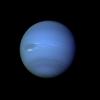
|
-
PIA00046:
-
Neptune Full Disk
Full Resolution:
TIFF
(814.1 kB)
JPEG
(32.49 kB)
|

|
1996-01-29 |
Miranda
|
Voyager
|
VG ISS - Narrow Angle
|
1016x1002x1 |
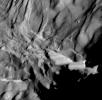
|
-
PIA00044:
-
Miranda High Resolution of Large Fault
Full Resolution:
TIFF
(330.8 kB)
JPEG
(75.76 kB)
|

|
1996-01-29 |
Ariel
|
Voyager
|
VG ISS - Narrow Angle
|
845x650x3 |
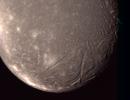
|
-
PIA00041:
-
Ariel - Highest Resolution Color Picture
Full Resolution:
TIFF
(1.506 MB)
JPEG
(45.92 kB)
|

|
1996-01-29 |
Titania
|
Voyager
|
VG ISS - Narrow Angle
|
700x700x3 |
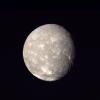
|
-
PIA00036:
-
Titania High-Resolution Color Composite
Full Resolution:
TIFF
(1.017 MB)
JPEG
(24.12 kB)
|

|
1996-01-29 |
Saturn
|
Voyager
|
VG Imaging Science Subsystem
|
1000x1000x3 |
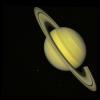
|
-
PIA00030:
-
Saturn With Rhea and Dione (True Color)
Full Resolution:
TIFF
(1.305 MB)
JPEG
(35.65 kB)
|

|
1996-01-29 |
U Rings
|
Voyager
|
VG ISS - Wide Angle
|
782x763x1 |
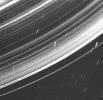
|
-
PIA00142:
-
Uranus Ring System
Full Resolution:
TIFF
(147.9 kB)
JPEG
(168.2 kB)
|

|
1996-01-29 |
Miranda
|
Voyager
|
VG ISS - Narrow Angle
|
774x787x1 |

|
-
PIA00141:
-
Miranda's Geologic History (Variety of Terrain)
Full Resolution:
TIFF
(288.8 kB)
JPEG
(63.36 kB)
|

|
1996-01-29 |
Miranda
|
Voyager
|
VG ISS - Narrow Angle
|
789x768x1 |

|
-
PIA00140:
-
Miranda Fractures, Grooves and Craters
Full Resolution:
TIFF
(270 kB)
JPEG
(99.9 kB)
|

|
1996-01-29 |
Neptune
|
Voyager
|
VG ISS - Narrow Angle
|
934x722x1 |

|
-
PIA00064:
-
Neptune's Dark Spot (D2) at High Resolution
Full Resolution:
TIFF
(499.8 kB)
JPEG
(135.7 kB)
|

|
1996-01-29 |
N Rings
|
Voyager
|
VG ISS - Wide Angle
|
785x1000x1 |

|
-
PIA00053:
-
Neptune Rings and 1989N2
Full Resolution:
TIFF
(156.9 kB)
JPEG
(117.3 kB)
|

|
1996-01-29 |
Neptune
|
Voyager
|
VG ISS - Narrow Angle
|
400x970x1 |

|
-
PIA00045:
-
Neptune - Changes in Great Dark Spot
Full Resolution:
TIFF
(270.4 kB)
JPEG
(40.38 kB)
|

|
1996-01-29 |
Titania
|
Voyager
|
VG ISS - Narrow Angle
|
640x760x1 |

|
-
PIA00039:
-
Titania - Highest Resolution Voyager Picture
Full Resolution:
TIFF
(145.1 kB)
JPEG
(33.78 kB)
|

|
1996-01-29 |
Io
|
Voyager
|
VG ISS - Narrow Angle
|
1000x1000x3 |
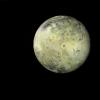
|
-
PIA00023:
-
Io - Full Disk
Full Resolution:
TIFF
(1.21 MB)
JPEG
(40.95 kB)
|

|
1996-01-29 |
Jupiter
|
Voyager
|
Imaging Science Subsystem
|
896x928x3 |

|
-
PIA00018:
-
Exaggerated Color View of the Great Red Spot
Full Resolution:
TIFF
(1.933 MB)
JPEG
(135.2 kB)
|

|
1996-01-29 |
Jupiter
|
Voyager
|
VG Imaging Science Subsystem
|
940x886x3 |
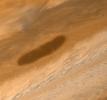
|
-
PIA00015:
-
Large Brown Oval
Full Resolution:
TIFF
(1.991 MB)
JPEG
(54.79 kB)
|

|
1986-12-18 |
Uranus
|
Voyager
|
VG ISS - Narrow Angle
|
1720x1720x3 |
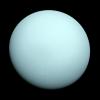
|
-
PIA18182:
-
Uranus as seen by NASA's Voyager 2
Full Resolution:
TIFF
(8.879 MB)
JPEG
(78.82 kB)
|

|
1986-01-25 |
Miranda
|
Voyager
|
VG ISS - Narrow Angle
|
571x574x1 |

|
-
PIA18185:
-
Miranda's Icy Face
Full Resolution:
TIFF
(328.3 kB)
JPEG
(60.74 kB)
|

 Planetary Data System
Planetary Data System































